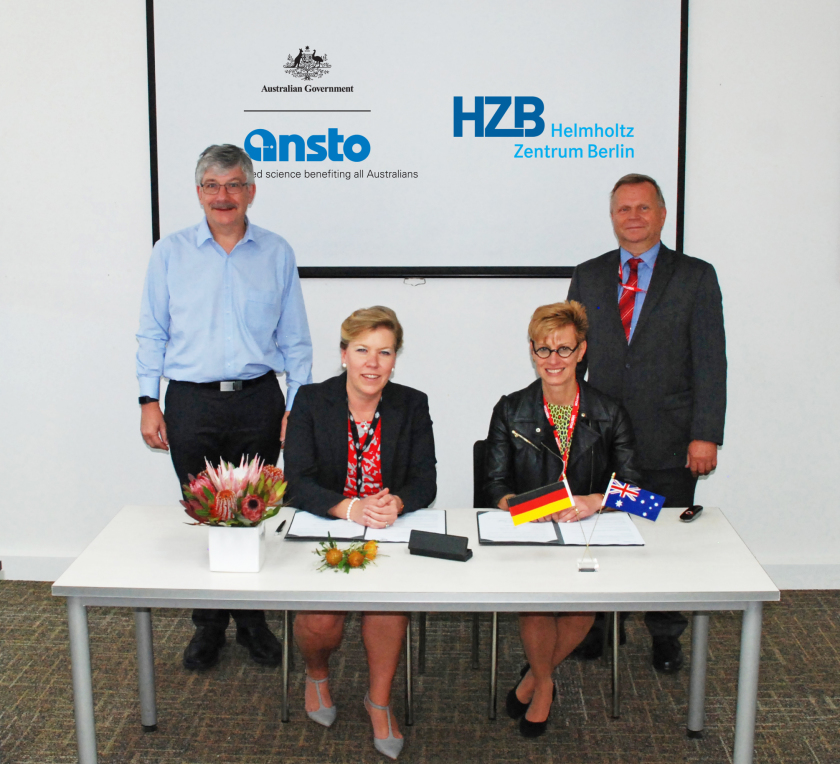HZB and ANSTO have extended their Memorandum of Understanding

ANSTO: Adi Paterson and Simone Richter, HZB: Prof Anke Kaysser-Pyzalla and Thomas Frederking. © ANSTO
Advancing energy materials research together
The heads of the HZB and the Australian Nuclear Science and Technology Organisation (ANSTO) recently have considerably extended the Memorandum of Understanding existing between the two institutions since 2015. They intend to further enhance their cooperation particularly in the area of energy materials research.
The memorandum comprises agreements on the exchange of personnel, advanced training, and reciprocal access to instruments located at the large-scale facilities of ANSTO and the HZB. The Australian Nuclear Science and Technology Organisation (ANSTO) research hub is located near Sydney, operating a synchrotron source as well as other infrastructures including the OPAL research reactor and Australian Centre for Neutron Scattering. ANSTO will be taking over the BioRef-Reflektometer for conducting research on soft matter and solid-state/liquid interfaces from BER II, the Berlin-based neutron source that will be shut down at the end of 2019. It will be available to the user community beginning 2018 under the name “Spatz” (German for “sparrow”). ANSTO is also active in the field of accelerator research, one in which HZB has likewise attained an international reputation.
Moreover, HZB has enhanced its collaboration with other leading Australian institutions. In summer 2016, Monash University appointed three HZB scientists from the field of energy materials research as adjunct professors.
More Information on ANSTO: http://www.ansto.gov.au
arö
https://www.helmholtz-berlin.de/pubbin/news_seite?nid=14564;sprache=en
- Copy link
-
New Helmholtz Young Investigator Group at HZB on perovskite solar cells
Silvia Mariotti starts building up the new Helmholtz Young Investigator Group ‘Perovskite-based multi-junction solar cells’. The perovskite expert, who was previously based at Okinawa University in Japan, aims to advance the development of multi-junction solar cells made from different perovskite layers.
-
Hydrogen storage in MXene: It all depends on diffusion processes
Two-dimensional (2D) materials such as MXene are of great interest for hydrogen storage. An expert from HZB has investigated the diffusion of hydrogen in MXene using density functional theory. This modelling provides valuable insights into the key diffusion mechanisms and hydrogen's interaction with Ti₃C₂ MXene, offering a solid foundation for further experimental research.
-
HZB and National University Kyiv-Mohyla Academy start cooperation in Energy and Climate
Helmholtz-Zentrum Berlin für Materialien und Energie GmbH (HZB) and the National University of "Kyiv-Mohyla Academy" (NaUKMA) have signed a Memorandum of Understanding (MoU). The MoU serves as the starting point for collaborative research, academic exchange, and capacity-building between the two institutions. Actions will be taken to establish the Joint Research and Policy Laboratory at NaUKMA in Kyiv. The aim of the future laboratory is to jointly develop research and policy analysis, focusing on the energy and climate dimensions of Ukraine’s EU integration.
